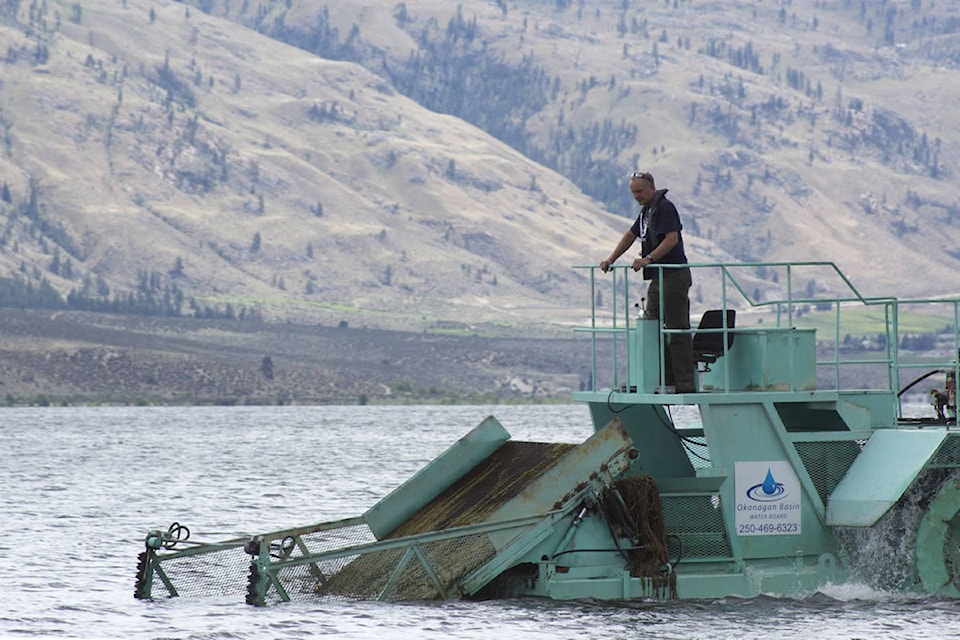What was intended to be a refreshing swim in Okanagan Lake turned into a near-death experience for a West Kelowna man.
Sandy Baldwin said he was swimming toward City Park, about 30 feet from the beach in water 10 to 15 feet deep, when he was tangled in milfoil weeds.
“It was quite scary in the moment because I wasn’t expecting it,” Baldwin said. “Your body gets wrapped up in the weeds and the harder you initially try to swim, the more entangled you get. I had to kind of stop myself and just slow down enough to think about what I needed to do. But you start thinking in that moment of panic about your kids and stuff … will anyone see me in trouble and what about my bike?”
Baldwin was in the midst of a 20 kilometre bike ride when he decided to stop for a dip.
“I kayak a lot so I am used to seeing milfoil in the water but I was surprised to come across it so close to the shore,” said Baldwin, noting it got him to thinking how a child could get stuck like he did and how would they get out.
“The milfoil didn’t leave a scratch on me but as I was swimming it would wrap around my legs each time I kicked. I switched over doing a swim crawl to doing a breaststroke to get through it.”
After getting back to shore, Baldwin looked back to the lake and could see the milfoil. While he was in the water, however, it was camoflaged.
Baldwin reported the incident to City of Kelowna staff and James Littley, operations and grant manager for the Okanagan Basin Water Board who oversees the region’s milfoil harvesting program responded.
Littley told Baldwin that milfoil control treatments are carried out along the north-south length of Hot Sands Beach in the winter by derooting the weed with a rototiller, but the environment treatment permit don’t extend to the area where Baldwin was swimming.
“We also have no ability to treat weeds in that area in the summer, as there is no access for our large trucks to remove the weeds once they are piled on the beach,” Littley said in a letter to Baldwin.
“We are working with the province on extending our environmental permits to allow us more flexibility to respond to areas that need treatment, but we are currently limited.”
Both invasive and native weeds are widespread throughout Okanagan Valley lakes, a problem made worse by climate change, and do pose in some areas a nuisance and hazard to recreation use.
A cold winter leading into a wet spring has presented a scheduling setback for milfoil harvesting. Winter derooting is considered the most effective control method because the weeds are dormant and won’t re-root.
“Areas that we would normally get to in the beginning of July are getting treatment now in the beginning of August because the high water mark made some of those areas inaccessible for launching our machines.”
The rising lake levels brought along the problem of debris, both posing a risk to milfoil control machines by cutting the harvesting teeth and submerging weeds that become suddenly very visible as the water level drops forming dense weed mats on the surface of the water.
Despite the delay, Littley said complaints about weed growth in the area lakes are on a par with past years.
The OBWB will organize for dump truck loads to be dropped at a yard or orchard if near a harvesting site, or tell people where they can pick up milfoil piled up on a beach for disposal. Call 250-469-6270.
